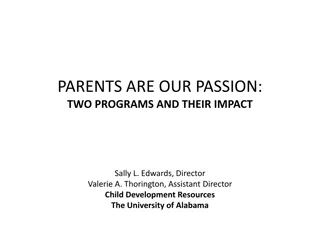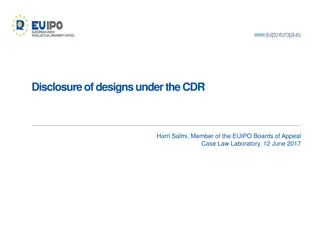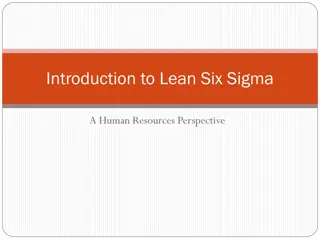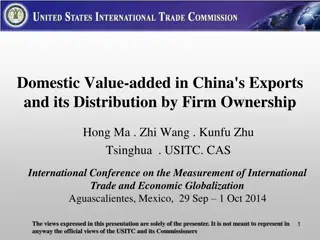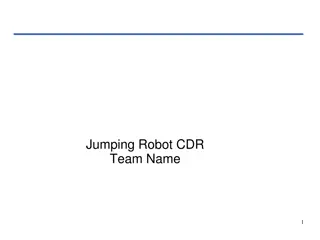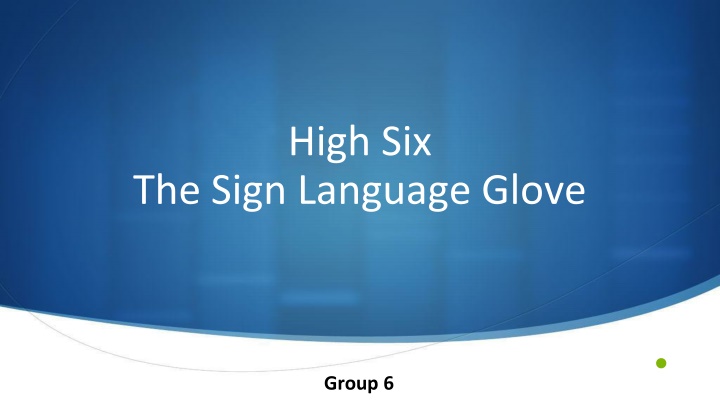
High Six: Innovative Sign Language Glove Project by Group 6
"High Six is a remarkable project developed by Group 6, aiming to assist the speech-impaired community with advanced sign language communication using high-tech gloves. Learn about their motivation, goals, specifications, and hardware components. Discover a fresh idea that leverages Android development and Bluetooth technology to provide fast and accurate translations for both text and audio communication."
Download Presentation

Please find below an Image/Link to download the presentation.
The content on the website is provided AS IS for your information and personal use only. It may not be sold, licensed, or shared on other websites without obtaining consent from the author. If you encounter any issues during the download, it is possible that the publisher has removed the file from their server.
You are allowed to download the files provided on this website for personal or commercial use, subject to the condition that they are used lawfully. All files are the property of their respective owners.
The content on the website is provided AS IS for your information and personal use only. It may not be sold, licensed, or shared on other websites without obtaining consent from the author.
E N D
Presentation Transcript
High Six The Sign Language Glove Group 6
Group Members Kirk Chan CpE Brian Troili EE Ali Mizan CpE Laura Rubio-Perez EE & CpE
Motivation Fresh idea to the UCF community This project has the potential to help the speech impaired Based on the research, technologies necessary were interesting Android development Bluetooth communication Personal taste
Goals We want the following key factors: HARDWARE SOFTWARE Low-power Android Lightweight Accurate & fast translations Wireless Support text & audio translations
Specifications Component Design Specification Hand gesture translation Less than 1s Glove weight Less than 1.5lbs Battery life (from one charge) Approximately 20hr Application startup Within 5s Bluetooth connection range Up to 50m Default gesture library American 26 letters, 10 numbers
Hardware Components Flex Sensors Able to detect changes in bend/flex Changes its resistance at several points along the device When a current is applied, it creates a voltage divider
Hardware Components Pressure Sensors Acts as a force sensing resistor When the sensor is unloaded, its resistance is very high When pressure is applied, its resistance decreases
Hardware Components Analog/Digital Converter (ADC) Serial communication preferred. Large number of input channels. Avoid serial address conflict. - ADS7828 I2C compatible 8 Channel ADC variable I2C address
Hardware Components Analog/Digital Converter (ADC) Serial communication preferred. Large number of input channels. Avoid serial address conflict. - ADS7828 I2C compatible 8 Channel ADC variable I2C address
Hardware Components Accelerometer and Gyroscope Inertial Measurement Unit (IMU) Speed demand allow for serial buses. - ITG3200/ADXL345 combo board 3.3V input I2C compatible 3 axis each calibrate to 2, 4, 8, and 16g
Hardware Components ADXL345 3-axis accelerometer Low power Low current use: 40 A in measuring mode and 0.1 A in stand by Suited for mobile device applications
Hardware Components ITG3200 3-axis digital gyroscope Low-cost motion sensor Features 16-bit analog-to-digital converters Supply voltage range: 2.1V - 3.6V Current consumption of 6.5mA
Hardware Components Wireless Communication Wifi Bluetooth NFC Secure connection Portable connection Low power Approx. 100m range Approx. 100m range Approx. 7-8in
Hardware Components Wireless Communication Wifi Bluetooth NFC Secure connection Portable connection Low power Approx. 100m range Approx. 100m range Approx. 7-8in
Hardware Components HC-06 Bluetooth Module Bluetooth v3.0 Operating voltage: 3.6V 6V Working current of 40mA Approximately $6 Range: 30ft
Hardware Components Microcontroller MSP430g2553 ATmega328p ATmega32u4 Operating Voltage 3.3V 5V 5.5V Digital I/O Pins 12 14 12 Analog Input Pins 12 6 12 Clock Speed 16MHz 16MHz 16MHz Architecture RISC RISC RISC Flash Memory 16KB 32KB 32KB
Hardware Components Microcontroller MSP430g2553 ATmega328p ATmega32u4 Operating Voltage 3.3V 5V 5.5V Digital I/O Pins 12 14 12 Analog Input Pins 12 6 12 Clock Speed 16MHz 16MHz 16MHz Architecture RISC RISC RISC Flash Memory 16KB 32KB 32KB
Hardware Components Development Environment Arduino IDE Code Composer Free Free Open source (Unlimited support ) Limited support Extensive libraries Direct access to control registers avr-gcc compiler C/C++ compilers and assembly
Hardware Components Development Environment Arduino IDE Code Composer Free Free Open source (Unlimited support ) Limited support Extensive libraries Direct access to control registers avr-gcc compiler C/C++ compilers and assembly
Hardware components Battery Nickel Cadmium Nickel Metal Hydride Polymer Lithium Ion Rechargeable Rechargeable Rechargeable Low energy density High energy density Highest energy density Good performance in low temperature Can operate in low temperature Resistant to overcharge Not environmental friendly Limited service life Require circuit protection High-self discharge Degradation in performance Age quickly
Hardware components Battery Nickel Cadmium Nickel Metal Hydride Polymer Lithium Ion Rechargeable Rechargeable Rechargeable Low energy density High energy density Highest energy density Good performance in low temperature Can operate in low temperature Resistant to overcharge Not environmental friendly Limited service life Require circuit protection High-self discharge Degradation in performance Age quickly
Hardware components LP-063048 Polymer Lithium Ion Battery Extremely light weight Outputs a 3.7V at 1000 mAh. Features 2C continuous discharge Robust power source under extreme conditions Long-term self-discharge rates Approximately $9 Bought from: Sparkfun
Hardware components Power Cell-LiPo Charger/Booster Single cell boost converter to 3.3V and 5V and Micro-USB charger all in one Boost converter is based on the TPS61200 from Texas Instrument Low input voltage synchronous boost converter Operating input voltage range from 0.3V to 5.5V Fixed and adjustable output voltage from 1.8V to 5.5V
Hardware components Power Cell-LiPo Charger/Booster micro-USB charger uses the MCP73831 It charges 3.7V LiPo cells at 100mA. Limits the charge current based on the die temperature during high power It utilizes a constant- current/ constant-voltage configuration The constant-voltage regulation has four options: 4.20V, 4.35V, 4.40V, and 4.50V
Hardware components LP2985 Regulator Low-dropout: 280 mV at 150-mA load current 7 mV at 1-mA load Low-noise operation with a typical output noise of 30 VRMS Consumption of only 0.01 A when the ON/OFF pin is pulled low. Overcurrent and thermal protection
Android vs iPhone Android Cross platform capable integrated development environment Familiarity with the Java language The most popular mobile platform iPhone Can only be developed in Mac Apps written in objective C Apple development software only works with other apple development software
Android IDEs IntelliJ (free version) Advantages: Less buggy More intuitive Faster Better GUI Disadvantages: Java, Groovy, or Scala are only 3 languages supported in free version Eclipse Advantages: More plug-ins available More commonly used Disadvantages: Has bugs and crashes a lot
Software Components Two main components: Android Application Is the interface between the user and the classification algorithm Takes in raw data from glove Displays letter on screen Translator Translates letters just by checking flex sensors and accelerometer to see if they fit certain boundaries The application has some default boundaries set, but can be customized by user
Threshold Based Algorithm How to recognize gestures? Compare sensor input from glove to high and low thresholds. Successful Recognition of a letter Sensor High Sensor data Low Within boundaries? Threshold Threshold S1 18 15 13 yes Boundaries can be adjusted Default boundaries we created come with application New boundaries stored in local memory and can be reset back to defaults S2 11 11 9 yes S3 25 21 17 yes
Threshold Based Algorithm How to segment data? Recognition algorithm only called when hand is still for about .5 seconds Which sensors need to be read? The flex and pressure sensors alone can differentiate between 32 of the 36 character For the 4 hand gestures that have same shape, orientation is used to differentiate them
Final Financing DESCRIPTION QTY PRICE Flex sensors 2.2 11 $79.50 IMU Digital Combo Board (3-Axis Gyro/Accelerometer) 1 $51.96 Flexiforce Pressure Sensors 4 $79.80 Bluetooth module (Free) 1 $0.00 Microcontroller (Atmega 328P) 1 $37.97 PCB 2 $584.78 Miscellaneous Surface Mounting - $85.00 TOTAL - $919.00 Boeing sponsorship - - $518.00 Total Available from Sponsorship - $0.00 Over budget - $401.00 Total per person - $100.25
Issues No such thing as universal boundaries Boundaries differ from user to user Hard to define boundaries Even with just one user, it may be difficult to define boundaries that work well most of the time BLE and Hidden Markov Model TPS61200 reference errors
Approaching the issues No Universal Boundaries allow the user to train boundaries for their hand Boundaries hard to define To make letters easier to classify, add a tolerance on top of the boundaries Ie: if tolerance = 5%, high and low boundaries both multiplied by 1.05 BLE and Hidden Markov Model Switched to classic Bluetooth (3.0) Switched to deterministic algorithm



